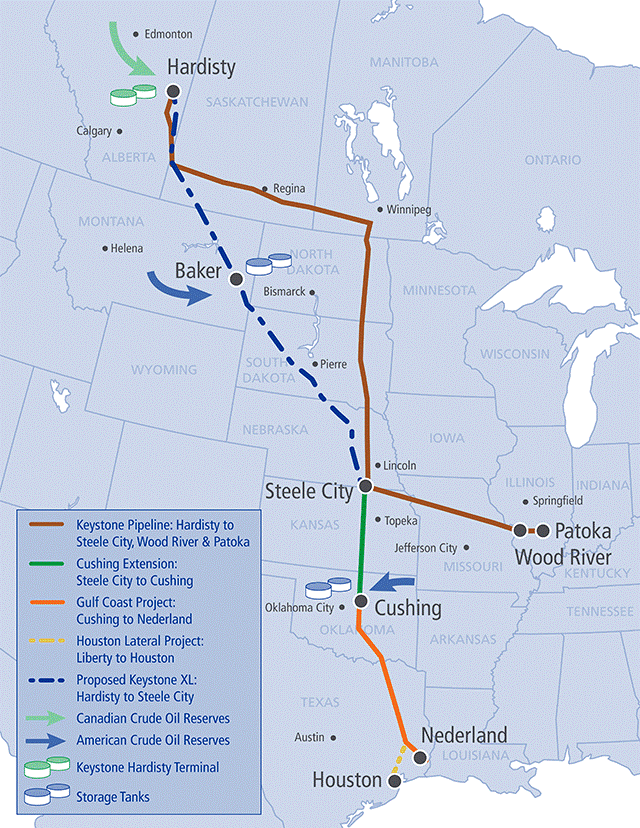A study prepared by the SMU/Cox’ Maguire Energy Institute for the Consumer Energy Alliance has some interesting data from the Keystone XL leg that connects Cushing, OK, with Nederland, TX (built because it’s a purely domestic leg and so did not require President Barack Obama’s personal approval). The figure below presents a map of the pipeline and some proposed adjuncts to it. The Gulf Coast Project is the section of the Keystone XL pipeline project that connects the two towns, and it was open for business last January, so the empirical data are current.
Here are some of the short-term benefits of the project’s work and a couple of longer term benefits:
- $2.3 billion in private-sector investment
- 11 million+ hours of labor completed by 4,844 American workers
- 50+ contracts with US manufacturers and companies that built the pipeline and associated equipment, spread across the country: Arkansas, California, Georgia, Indiana, Kansas, Louisiana, Maryland, Michigan, Minnesota, Missouri, New York, Ohio, Oklahoma, Oregon, Pennsylvania, South Carolina, and Texas
- manufacture of 485+ miles of high-strength, advanced oil pipeline (36-inch diameter) and associated equipment: thousands of pieces of equipment used to build transformers, meters, electric motors, cabling and electrical equipment; piping assembling and structural steel for supports; etc
- 2.25 million barrels of new oil storage capacity at Cushing
- 6 modern pump stations
Some broader results of the pipeline:
- pumped $3.6 billion into the Texas economy, $2.1 billion into the Oklahoma economy
- boosted local tax revenues by millions of dollars
- Prague, OK: “doubled our city sales tax receipts”
- full RV parks from the construction effort contributed as much as $8,000 a month in electricity fees alone to the municipal utility
- tax revenue available—and used—to improve education, local infrastructure, and public services
- Local restaurants, hotels, and businesses experience a significant boos
This table summarizes the overall economic impact of the project:
| Oklahoma Pipeline Impacts | Texas Pipeline Impacts | |
| Total Economic Activity | $2,143,364,856 | $3,638,561,905 |
| Labor Income | $1,041,174,418 | $1,696,054,834 |
| Employment (person years) | 15,852 | 26,924 |
| Total Taxes | $72,384,852 | $144,992,343 |
| Indirect Business Taxes | $50,339,639 | $112,533,584 |
| Direct Business Taxes | $22,045,213 | $32,458,759 |
Many will argue that most of these effects will disappear in a few years, even as soon as the pipeline builders leave. Since the results are temporary, why bother, especially given the risks of an oil pipeline? Leaving aside the fact that pipelines are safer than trains for transporting oil and natural gas, ask the folks who’ve gotten these “temporary” fiscal results whether they think any of it was “worth it.”
